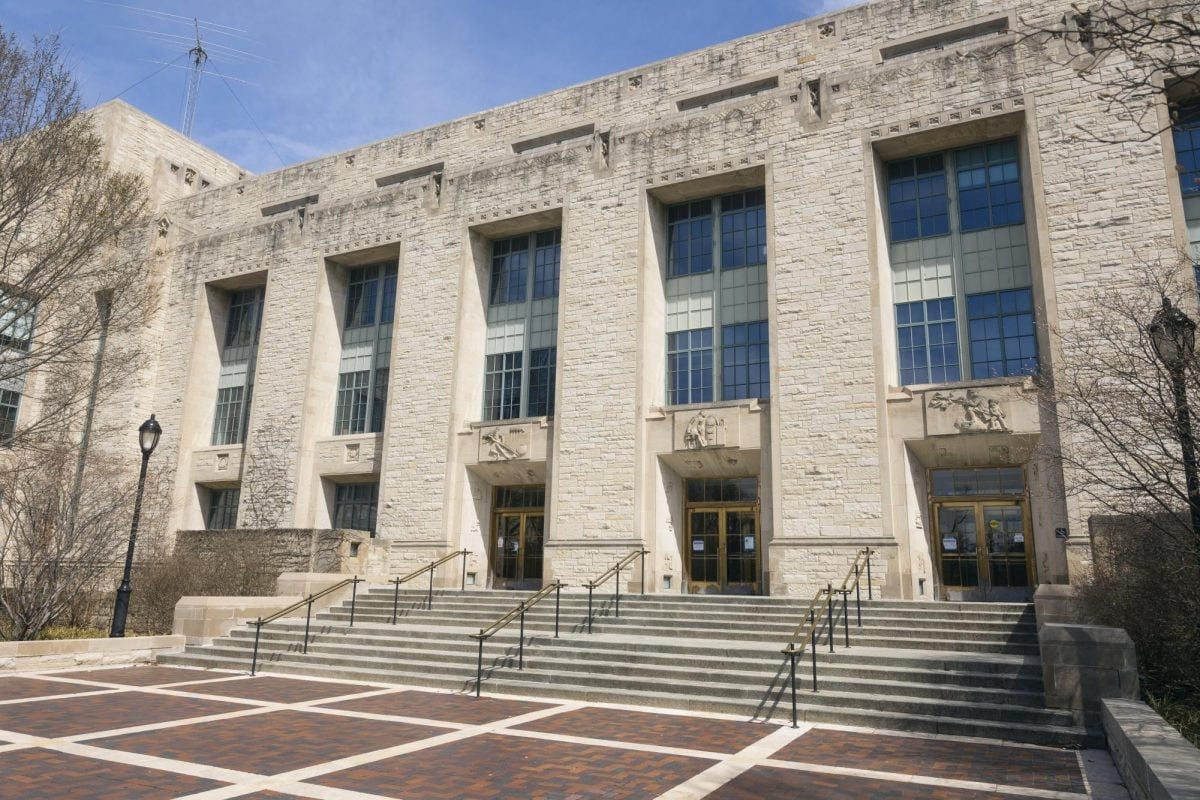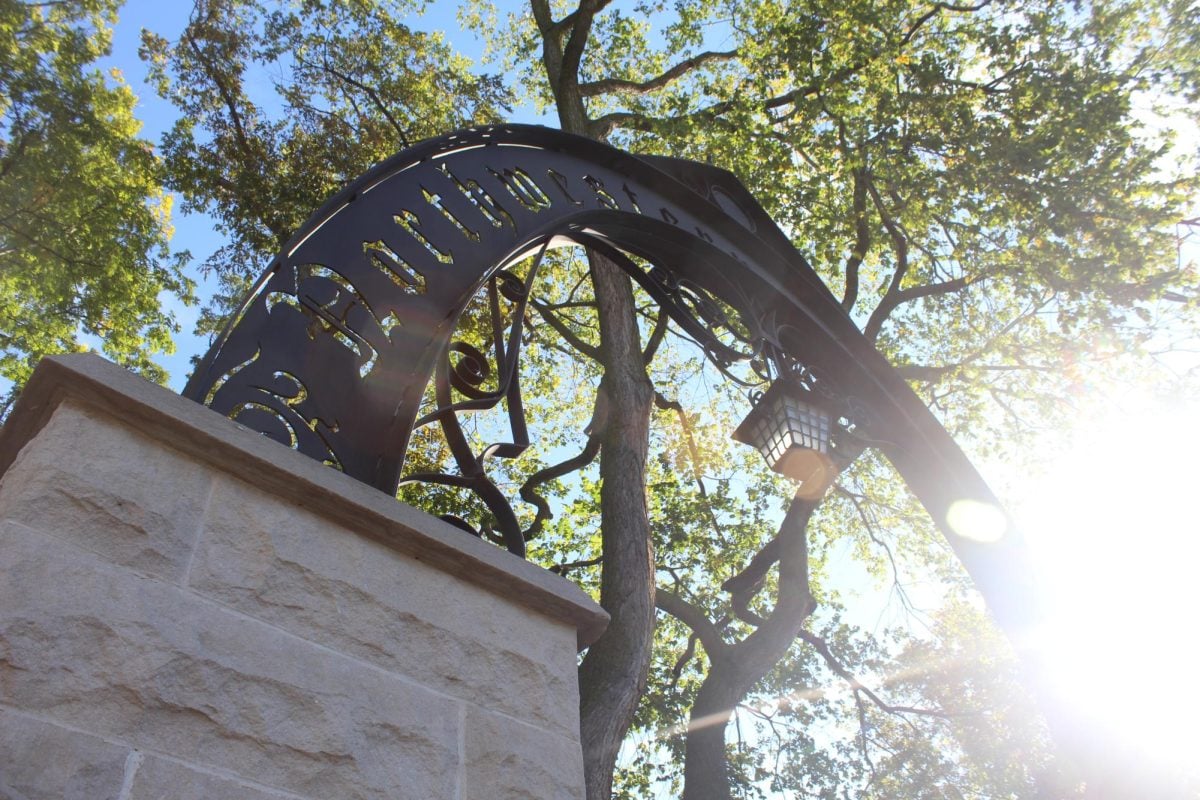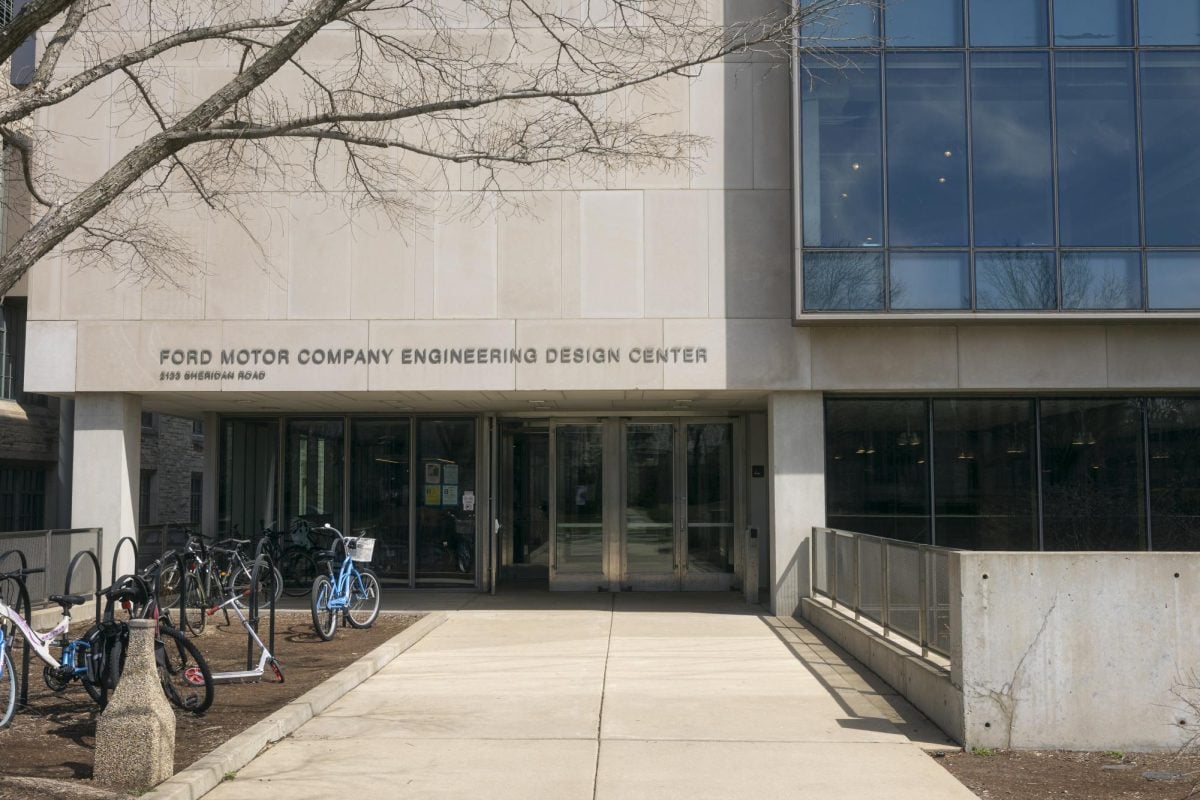Northwestern Profs. Kimberly Gray and Manijeh Razeghi have a lot in common – both women are mothers who began teaching at McCormick in the early nineties – but the two professors have nearly opposite views on what it feels like to be a woman in an underrepresented field.
Gray, the only tenured female faculty member in the Civil and Environmental Engineering department, said she feels discriminated against every day, not only because she is a woman, but also because her environmental engineering discipline is not respected in the department. Gray said she is never included in the department’s internal processes such as faculty search committees or policy changes in programs, including the Environmental Sciences, Engineering, and Policy academic program she created.
“I’m in the upper echelon of my department in terms of criteria that are used to evaluate productivity in science,” she said, listing class sizes, research innovation and publications as examples. “And yet, I would say that I am completely marginalized at Northwestern.”
But Razeghi, a professor in the Electrical Engineering and Computer Science department, said discrimination is not applicable to women who strive do to their best and have the “right priorities.” She said she has never missed a day of class or taken a vacation in her life.
“Yes, the women are the minority,” Razeghi said. “But there is no difference if they do their job correctly. If women are doing a great job, they don’t need to worry about discrimination. If you do your job perfectly, everybody needs you.”
The contrast between the viewpoints of Razeghi and Gray shows the consequences of underrepresentation of both women and minorities in higher education and, specifically, at NU.
“We’ve had some success, not as much as you would hope for,” University President Morton Schapiro said of faculty diversity. “We’ve had success versus what other institutions have had, or what we’ve had in the past.”
In 2003, NU was ranked ninth out of the top 15 universities in highest numbers of female full professors, according to the Consortium on Financing Higher Education. It also had the third-highest number of African-American assistant professors and seventh-highest in Hispanic full professors.
Despite this progress, the University is about to delve into a whole new approach to faculty diversity.
This Winter Quarter, NU will unveil the University Diversity Council: a new committee dedicated to expanding diversity not only in faculty, but in all aspects of the NU community - professors, staff members, undergraduates, graduate students, curriculum and student life.
Expanding racial and gender diversity in the faculty body will continue to be a top priority for NU, but the Council’s focus will go beyond that, said University Provost Daniel Linzer. Research conducted for the Strategic Plan revealed NU needs more diversity in all facets of university affairs, Linzer said.
“This has been a long-term commitment,” he said. “This is an important step to show the seriousness that Northwestern is addressing this.”
University Diversity Council
The new council will grow out of the current Faculty Diversity Committee, a 12-person group formed by former provost Lawrence Dumas in October 2000. For ten years, the group looked specifically to hire more women in science, technology, engineering and mathematics, and more African-Americans and Hispanic Americans across the board.
The University granted the committee $1 million to fund its initiatives, which included appointing an African-American visiting faculty member for one quarter in hopes of hiring him long-term, granting start-up funding to support a research program for one junior-level Latino faculty member and sending representatives from NU to top graduate schools to recruit future professors, according to the 2001 Faculty Diversity Committee report.
The committee, which met once a quarter, was handpicked by the provost to include several school deans and professors, as well as one student member from Associated Student Government’s executive board.
Molecular Biosciences Prof. Carole LaBonne, a current member of the Faculty Diversity Committee, said she is excited to see the transition from committee to council.
“Progress needs to be made on all fronts,” she said. “One shouldn’t de-emphasize any of these things.”
Current Faculty Diversity Committee members will automatically stay on as members of the University Diversity Council, but the new group will also add numbers and change structure, said Associate Provost Jim Young.
The Council will include four working groups: Academics and Education will focus on incorporating diverse issues into curriculum and research; Campus Life will look to expand diversity in students and staff; the Pipeline group will develop programs in middle schools, high schools and at NU to generate interest in higher education and professorship; and Lifetime Connections members will solicit input from alumni. The University is in the process of choosing and securing co-chairs for each group, Young said.
Though the Faculty Diversity Committee hasn’t met since the decision to form the Council was made, Young said most members will be enthusiastic about the shift.
“The committee members in the past have expressed a desire to become more actively engaged in work outside the meetings themselves,” he said. “They’ll also be expressing their opinions as to how we should go about doing this.”
Both Young and Linzer said students will be represented in some way on the Council, but did not know in what capacity, as new Council members will most likely be handpicked as they were in the Faculty Diversity Committee.
Diversity in the last decade
In its first few years of existence, the Faculty Diversity Committee saw a notable gain in diverse faculty hires.
From 2000 to 2009, NU saw a net gain of 95 female tenure-track and tenured professors to a total of 359, accounting for about 27 percent of total tenure-track and tenured faculty at NU.
According to the Committee’s latest report from 2009, the School of Communication held the highest proportion of tenure-track women faculty of any NU school at about 46 percent; McCormick had the lowest representation rate with about 12 percent.
In 2004, NU recorded an unprecedented 43 African-American tenure-track and tenured faculty members, nearly double the 22 reported four years earlier. Hispanic-American representation also improved slightly from 2000 to 2004, from 25 tenure-track and tenured faculty members to 31.
But improvements in diverse hiring plateaued five or six years after the Faculty Diversity Committee was formed, said Associate Provost Jim Young, largely because the pool of African-American, Hispanic-American and female candidates is only so large.
“Institutions recruit faculty from one another,” Young said. “There is a fair amount of turnover of talented women and minority faculty anyway.”
Prof. David Ferster, chair of the neurobiology department, agreed the problem is not failing to make an effort to hire diverse candidates, but finding those candidates. He recalled a recent faculty search in his department.
“The woman we’d made an offer to had probably eight significant offers around the country,” Ferster said. “There’s tremendous competition to hire because every university wants to increase diversity. Whenever a candidate appears, there’s a lot of people vying for that candidate.”
Building the pipeline
This redistribution of minority and female faculty from university to university doesn’t help the overall situation, Linzer said.
Expanding the actual number of minority and female graduate students who are eligible to become long-term faculty members, or “building the pipeline,” is one of the University Diversity Council’s top priorities when it comes to expanding faculty diversity – and perhaps the most difficult to achieve.
“That’s a huge societal challenge,” Linzer said. “Even if diverse students today as undergraduates are studying and doing well, how many are willing to go into graduate school? And then, how many are willing to enter the academy?”
Schapiro agreed diversifying the University’s teaching body goes beyond the efforts of any faculty search committee.
“You know what the lesson is? You have to increase the pool,” he said.
Having a diverse faculty is one of the best ways to attract diverse graduate students, because students look to teachers as role models, said African-American Studies and sociology Prof. Mary Pattillo. She said many students of color feel comfortable approaching her for academic advice.
“(Students) might say, ‘I never thought of getting a Ph.D., but here’s this person I kind of identify with, maybe I could be a college professor,'” she said. “The symbolic representation of not all professors not always being old, white men is important for grooming a next generation of diverse faculty members.”
Women in STEM fields
Women represented only 17.3 percent of tenure-track appointments in NU’s science, technology, engineering and mathematics fields from 2005 to 2009, as compared to 27 percent of appointments university-wide.
LaBonne said gender diversity is not yet sufficient in the STEM disciplines, but it is visibly improving.
“One gets frustrated looking over the course of one’s career in how little progress has been made in one’s STEM field,” she said. “But there are certainly more women now than when I was a graduate student.”
LaBonne said there are two major factors hindering female representation in long-term faculty positions: raising children and being married to someone also in academia. Though men and women share the task of child rearing more equally than ever before, women still must bear the burden of physically carrying the baby, which can often interrupt a career in academia, she said.
Joseph Schofer, McCormick associate dean for faculty affairs, said childcare is an issue for both male and female faculty members.
“There is a need for convenient and reasonably priced child care close to campus,” said Schofer, who served on the Faculty Diversity Committee from 2000 to 2006. “That’s a very general factor that any employer faces across our society. It’s an issue for Northwestern.”
Universities also face the difficulty of hiring women whose husbands are also academics and need faculty jobs, known as the “two-body problem,” LaBonne said. Though it can potentially be beneficial for a school to hire a couple, it requires the university to have enough space in the department’s faculty, as well as the money for another salary, she said.
Chemistry Prof. Lin Chen said progress has been made in the number of female students studying STEM majors. About half of the students in her class of juniors and seniors are female, which is “tremendous progress,” she said.
Still, there lacks equal female representation higher up.
“The pipeline, at the higher level, the senior faculty level, there hasn’t been as much progress,” she said. “There’s still a way to go.”
Underrepresented racial minorities
African-Americans and Hispanic-Americans in all fields, and Asian-Americans in social sciences are among the most underrepresented minority groups in higher education and NU, the Faculty Diversity reports stated.
The 47 African-American faculty members in 2009 accounted for about 3.7 percent of total faculty. This number stayed relatively stagnant since 2004, the report stated.
Similar to female faculty, African-American faculty are more present in non-STEM fields. NU’s sociology department is fairly diverse with four tenured black faculty members, said African-American Studies department chair and sociology Prof. Celeste Watkins-Hayes. However, even in more racially diverse fields, retaining those faculty members remains an issue.
NU must offer something other schools don’t to stay competitive in diverse hiring. For the African-American Studies department, it’s the community, Watkins-Hayes said.
“The community of faculty of color is very strong,” she said. “We work a lot across departments. We have close collaborations with Latino Studies, with Asian-American Studies. That builds a close campus climate and puts us in a strong position to recruit.”
The establishment of Latina and Latino Studies in 2009 was one of the Faculty Diversity Committee’s initiatives that came to fruition. But Prof. Frances Aparicio, who was hired last year to chair the department, said NU still needs improvement in hiring Latino scholars outside of the Latino/a Studies field.
“We’re far from saying we have a very diverse faculty body,” she said.
As of 2009, there were 37 Hispanic faculty members, representing 2.7 percent of the total NU tenured and tenure-track faculty, a number that also stalled beginning in 2005.
However, Aparicio lauded NU’s two recent Hispanic administrative hires – Daniel Rodriguez will begin his term as dean of the School of Law in 2012 and Patricia Telles-Irvin took over as vice president for student affairs this academic year.
“I’m really excited to see those kinds of appointments being made,” Aparicio said. “It’s important for
us to be there for the Latino students.”
Having a racially diverse faculty benefits the education of white students as well.
Medill graduate student Bethany Leggett said diversity is particularly important in her journalism education.
“The more people you have influencing you, the better journalist you will be,” she said. “It doesn’t matter what gender, what race, or even political ideas, but the differences that are available to you as a student to give you a broader scope, to get you out of your limits, make you a better writer.”
Medill Dean John Lavine said considerable progress has been made in hiring female journalism professors – two-thirds of the current clinical full-time professors are female – but he is not satisfied with the racial diversity of Medill’s faculty.
“We’ve done okay with (hiring) women,” Lavine said. “But we’ve done a wholly inadequate job in bringing in people of color, even though we’ve made great progress. I feel pained about it.”
Definition of ‘diversity’
According to Young, the University Diversity Council will continue to pursue higher-education diversity as the government defines it – as racially diverse and female Americans.
Young said he had no idea whether or not international diversity will be considered by the Council, especially because foreign-born faculty are excluded from diversity statistics. This poses a question for NU, said Linzer, who said he believes hiring foreign faculty members is still important.
“We also want to be much more global in our outlook,” he said. “At the same time, international faculty are not counted in diversity numbers. It’s just one of the things that come up all the time that lead you to ask, ‘What’s the real goal?'”
Lavine said hiring more international faculty is part of his goal for the journalism school’s future. Medill’s definition of diversity goes beyond the government’s definition, which he said is too narrow.
In addition to American-born racially diverse hires, “I want Muslim faculty, I want black faculty, I want Asian faculty, I want Indian faculty from India, too,” Lavine said.
Students, faculty, staff and administrators will be able to learn more about NU’s diversity efforts and the University Council at a forum to be held later this academic year.
Linzer said as long as students are receiving a better education for it, NU will continue to branch out.
“The real goal is to create an environment that maximizes our mission of learning through education and research,” he said.




















